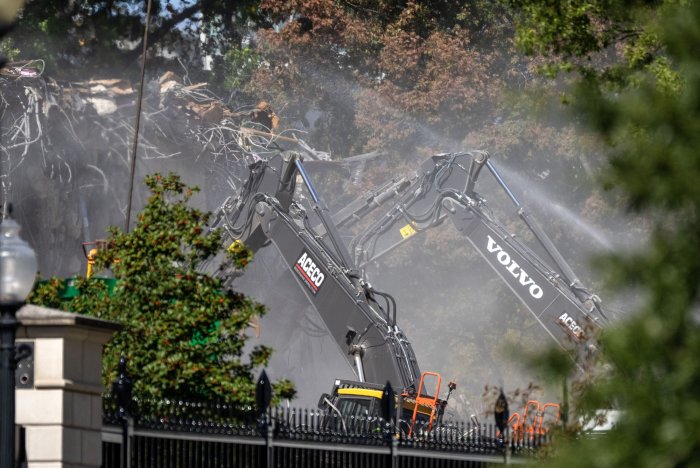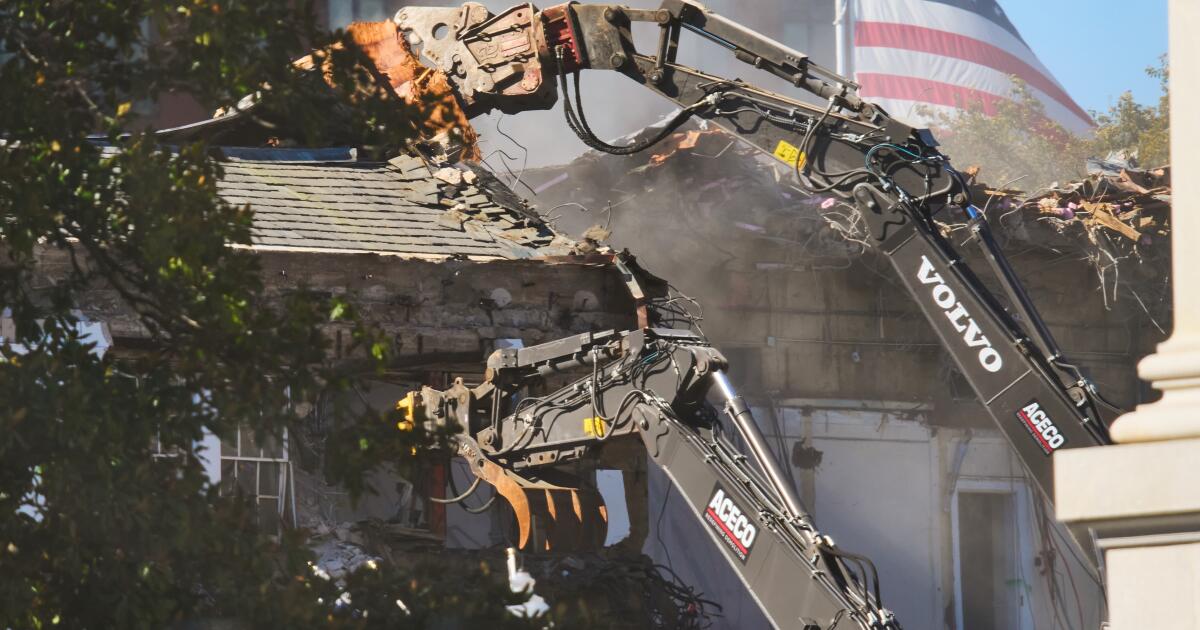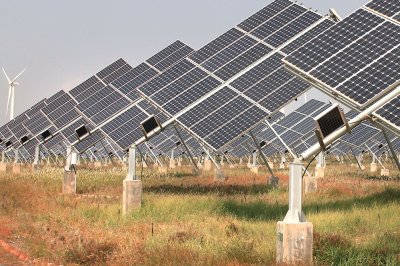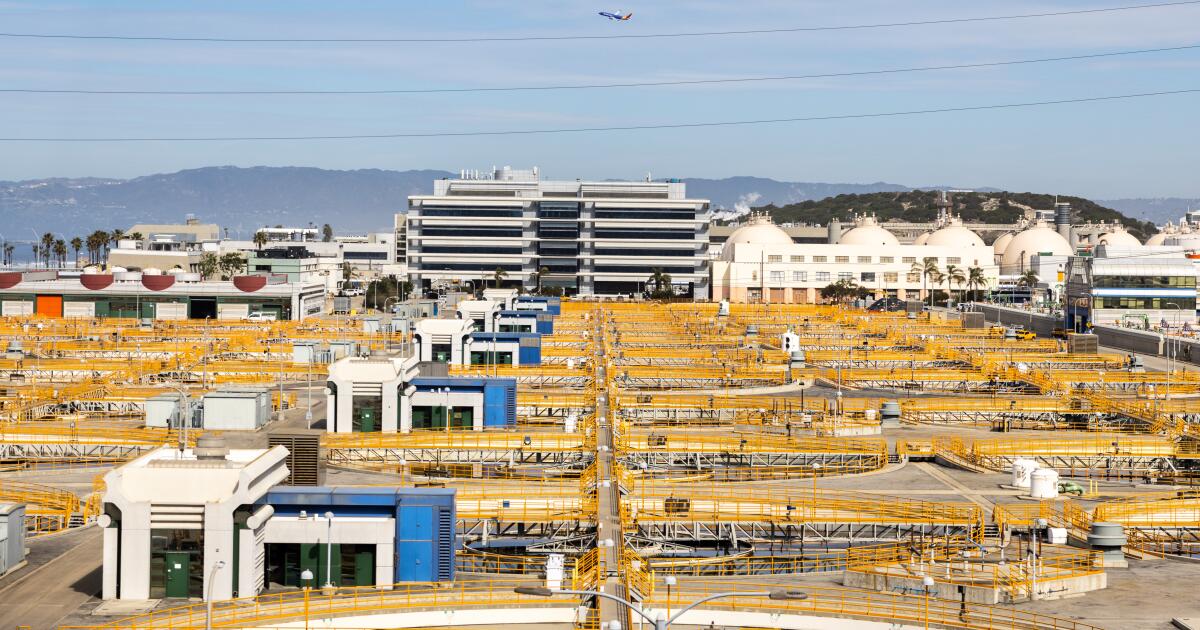NEW YORK — President Trump is openly embracing the conservative blueprint he desperately tried to distance himself from during the 2024 campaign, as one of its architects works to use the government shutdown to accelerate his goals of slashing the size of the federal workforce and punishing Democratic states.
In a post on his Truth Social site Thursday morning, Trump announced he would be meeting with his budget chief, “Russ Vought, he of PROJECT 2025 Fame, to determine which of the many Democrat Agencies, most of which are a political SCAM, he recommends to be cut, and whether or not those cuts will be temporary or permanent.”
The comments represented a dramatic about-face for Trump, who spent much of last year denouncing Project 2025, The Heritage Foundation’s massive proposed overhaul of the federal government, which was drafted by many of his longtime allies and current and former administration officials.
Both of Trump’s Democratic rivals, Joe Biden and Kamala Harris, made the far-right wish list a centerpiece of their campaigns, and a giant replica of the book featured prominently onstage at the Democratic National Convention.
“Donald Trump and his stooges lied through their teeth about Project 2025, and now he’s running the country straight into it,” said Ammar Moussa, a former spokesperson for both campaigns. “There’s no comfort in being right — just anger that we’re stuck with the consequences of his lies.”
Shalanda Young, director of the Office of Management and Budget under Biden, said the administration had clearly been following the project’s blueprint all along.
“I guess Democrats were right, but that doesn’t make me feel better,” she said. “I’m angry that this is happening after being told that this document was not going to be the centerpiece of this administration.”
Asked about Trump’s reversal, White House spokesperson Abigail Jackson said, “Democrats are desperate to talk about anything aside from their decision to hurt the American people by shutting down the government.”
Project what?
Top Trump campaign leaders spent much of 2024 livid at The Heritage Foundation for publishing a book full of unpopular proposals that Democrats tried to pin on the campaign to warn a second Trump term would be too extreme.
While many of the policies outlined in its 900-plus pages aligned closely with the agenda that Trump was proposing — particularly on curbing immigration and dismantling certain federal agencies — others called for action Trump had never discussed, like banning pornography, or Trump’s team was actively trying to avoid, like withdrawing approval for abortion medication.
Trump repeatedly insisted he knew nothing about the group or who was behind it, despite his close ties with many of its authors. They included John McEntee, his former director of the White House Presidential Personnel Office, and Paul Dans, former chief of staff at the U.S. Office of Personnel Management.
“I know nothing about Project 2025,” Trump insisted in July 2024. “I have no idea who is behind it. I disagree with some of the things they’re saying and some of the things they’re saying are absolutely ridiculous and abysmal. Anything they do, I wish them luck, but I have nothing to do with them.”
Trump’s campaign chiefs were equally critical.
“President Trump’s campaign has been very clear for over a year that Project 2025 had nothing to do with the campaign, did not speak for the campaign, and should not be associated with the campaign or the President in any way,” wrote Susie Wiles and Chris LaCivita in a campaign memo. They added, “Reports of Project 2025’s demise would be greatly welcomed and should serve as notice to anyone or any group trying to misrepresent their influence with President Trump and his campaign — it will not end well for you.”
Trump has since gone on to stock his second administration with its authors, including Vought, “border czar” Tom Homan, CIA Director John Ratcliffe, immigration hard-liner Stephen Miller and Brendan Carr, who wrote Project 2025’s chapter on the Federal Communications Commission and now chairs the panel.
Heritage did not respond to a request for comment Thursday. But Dans, the project’s former director, said it’s been “exciting” to see so much of what was laid out in the book put into action.
“It’s gratifying. We’re very proud of the work that was done for this express purpose: to have a doer like President Trump ready to roll on Day One,” said Dans, who is currently running for Senate against Lindsey Graham in South Carolina.
Trump administration uses the shutdown to further its goals
Since his swearing in, Trump has been pursuing plans laid out in Project 2025 to dramatically expand presidential power and reduce the size of the federal workforce. They include efforts like the Department of Government Efficiency and budget rescission packages, which have led to billions of dollars being stalled, scrapped or withheld by the administration so far this year.
They are now using the shutdown to accelerate their progress.
Ahead of the funding deadline, OMB directed agencies to prepare for additional mass firings of federal workers, rather than simply furloughing those who are not deemed essential, as has been the usual practice during past shutdowns. Vought told House GOP lawmakers in a private conference call Wednesday that layoffs would begin in the next day or two.
They have also used the shutdown to target projects championed by Democrats, including canceling $8 billion in green energy projects in states with Democratic senators and withholding $18 billion for transportation projects in New York City that have been championed by Senate Democratic Leader Chuck Schumer and House Democratic leader Hakeem Jeffries in their home state.
Dreaming of this moment
The moves are part of a broader effort to concentrate federal authority in the presidency, which permeated Project 2025.
In his chapter in the blueprint, Vought made clear he wanted the president and OMB to wield more direct power.
“The Director must view his job as the best, most comprehensive approximation of the President’s mind,” he wrote. Vought described OMB as “a President’s air-traffic control system,” which should be “involved in all aspects of the White House policy process,” becoming “powerful enough to override implementing agencies’ bureaucracies.”
Sen. Mike Lee, R-Utah, said on Fox News Channel that Vought “has a plan, and that plan is going to succeed in further empowering Trump. This is going to be the Democrats’ worst nightmare.”
House Speaker Mike Johnson echoed that message, insisting the government shutdown gives Trump and his budget director vast power over the federal government and the unilateral power to determine which personnel and policies are essential and which are not.
Schumer has handed “the keys of the kingdom to the president,” Johnson said Thursday. “Because they have decided to vote to shut the government down, they have now effectively turned off the legislative branch … and they’ve turned it over to the executive.”
Young said the Constitution gives the White House no such power and chastised Republicans in Congress for abandoning their duty to serve as a check on the president.
“I don’t want to hear a lecture about handing the keys over,” she said. “The keys are gone. They’re lost. They’re down a drain. This shutdown is not what lost the keys.”
Colvin writes for the Associated Press.























